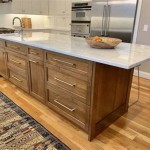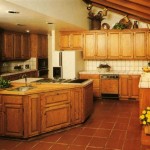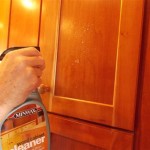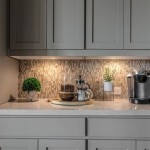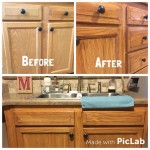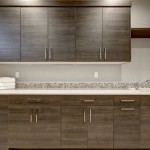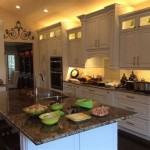What Kind Of Countertop For Outdoor Kitchen: Guide to Durable and Stylish Options
An outdoor kitchen extends living spaces and enhances the enjoyment of outdoor environments. Selecting the right countertop material is crucial for achieving both functionality and aesthetic appeal. The ideal outdoor countertop must withstand the elements, resist stains and scratches, and complement the overall design of the outdoor space. This article explores various countertop options suitable for outdoor kitchens, focusing on their durability, maintenance requirements, aesthetic qualities, and cost considerations.
The climate significantly influences countertop selection. Countertops in regions with harsh winters must be able to withstand freezing temperatures and potential thawing cycles. Excessive heat and UV exposure, common in warmer climates, can fade colors and damage certain materials. Additionally, exposure to moisture can promote mold and mildew growth if the chosen material is not properly sealed or naturally resistant.
Durability and Weather Resistance
Durability represents a primary consideration when selecting a countertop for an outdoor kitchen. The countertop will be exposed to a range of environmental factors, including sunlight, rain, temperature fluctuations, and potential contact with food and liquids. Materials that are porous or susceptible to cracking or staining may not be suitable for outdoor use. Therefore, understanding the specific weather conditions in the region is essential when making a countertop decision.
Granite exemplifies a highly durable and weather-resistant option. Its inherent density makes it resistant to stains, scratches, and heat. Granite can withstand freezing temperatures without cracking or warping. However, it is important to seal granite periodically to prevent the absorption of liquids and maintain its appearance. Regular sealing is often recommended on an annual or bi-annual basis, depending on the specific type of granite and the level of exposure to the elements.
Concrete provides another robust option for outdoor countertops. It can be customized with various colors, textures, and finishes. Properly sealed concrete is resistant to cracking, staining, and heat damage. Concrete countertops can also be reinforced with steel or fiber to increase their strength and durability. The weight of concrete requires strong support structures during installation, adding to the overall cost and complexity of the project.
Stainless steel offers a non-porous and highly durable surface. It is resistant to rust, corrosion, and staining. Stainless steel is also easy to clean and maintain, making it a practical choice for outdoor kitchens. However, it can become hot in direct sunlight and is susceptible to scratches and dents. The sleek, modern appearance of stainless steel may not suit all outdoor design styles.
Porcelain tile countertops represent another strong contender. Porcelain is highly durable and resistant to scratches, stains, and heat. It is also non-porous, making it impervious to water damage. Porcelain tiles come in a wide range of colors, patterns, and textures, offering design flexibility. The installation of porcelain tile countertops requires specialized skills to ensure proper sealing and prevent cracking or chipping.
Maintenance and Cleaning Requirements
The amount of maintenance required to keep an outdoor countertop looking its best represents a crucial factor to consider. Countertops that require frequent cleaning, sealing, or repairs can become burdensome. Low-maintenance options are often preferable for outdoor kitchens, particularly for those who want to maximize their enjoyment of the space with minimal upkeep.
Granite, while durable, needs periodic sealing to prevent staining. Cleaning granite typically involves using a mild detergent and warm water. Abrasive cleaners should be avoided, as they can damage the sealant. Regular cleaning will help to maintain the luster and prevent the buildup of grime and dirt.
Concrete countertops also require sealing to protect against stains and water damage. The frequency of sealing depends on the type of sealant used and the level of exposure to the elements. Cleaning concrete involves using a pH-neutral cleaner to avoid damaging the sealant. Concrete can be prone to hairline cracks over time, which may require patching or repair.
Stainless steel is relatively easy to clean, requiring only soap and water or a stainless steel cleaner. It is important to dry the surface thoroughly to prevent water spots. Specialized stainless steel cleaners can help to remove fingerprints and smudges. Regular cleaning will help to maintain the appearance of stainless steel and prevent the buildup of grime.
Porcelain tile countertops are exceptionally easy to clean and maintain. They are resistant to stains and do not require sealing. Cleaning porcelain tile involves using a mild detergent and warm water. The grout lines between the tiles may require occasional cleaning with a grout cleaner to remove dirt and mildew. Regular cleaning will help to maintain the appearance of the tile and grout.
Soapstone is a less porous material that doesn't require sealing like granite. The countertops will naturally darken over time where liquids are spilled on them. Mineral oil is the most common cleaner used for this countertop material.
Aesthetic Qualities and Design Considerations
The countertop material significantly contributes to the aesthetic appeal of the outdoor kitchen. The chosen material should complement the overall design style of the outdoor space, including the surrounding landscaping, furniture, and architectural elements. Consider the color, texture, and finish of the countertop to achieve the desired look.
Granite offers a natural, elegant aesthetic with a wide range of colors and patterns. Its natural variations in color and veining provide a unique, upscale look. Granite complements various design styles, from traditional to contemporary. The polished surface of granite reflects light, adding brightness to the outdoor space.
Concrete provides a more industrial or modern aesthetic. It can be customized with various colors and textures to achieve the desired look. Concrete can be stained to mimic natural stone or polished to a smooth, glossy finish. The raw, unrefined appearance of concrete can create a contemporary, minimalist feel.
Stainless steel offers a sleek, modern aesthetic. Its reflective surface adds brightness to the outdoor space. Stainless steel complements contemporary designs and creates a clean, professional look. The industrial appearance of stainless steel may not suit all outdoor design styles.
Porcelain tile countertops offer design flexibility with a wide range of colors, patterns, and textures. They can mimic the look of natural stone, wood, or other materials. Porcelain tiles can be used to create intricate designs and patterns. The versatility of porcelain tile makes it suitable for various design styles.
When selecting a countertop material, consider the surrounding environment. For instance, a countertop with a light color can reflect heat in hot climates. A darker color can absorb heat faster. The color of the countertop should also complement the color of the cabinetry and other outdoor elements. Smooth concrete with clean lines can create a modern look, while natural materials like teak can create a more rustic appearance.
Ultimately, the choice of countertop material depends on a combination of factors, including budget, lifestyle, and aesthetic preferences. Evaluate the specific needs and priorities to select the option that best suits the outdoor kitchen and enhances the enjoyment of outdoor living spaces.
The thickness and weight of the countertop material should also be taken into consideration. Thicker countertops tend to be more durable and can withstand heavier use. Heavier materials like concrete and natural stone require strong support structures to prevent sagging or damage to the cabinets. Lighter materials like stainless steel and porcelain tiles can be installed on less robust structures.
The edging of the countertop should also be considered. Bullnose edges are rounded and provide a soft, smooth look, while square edges offer a more modern, angular appearance. The edge profile can impact the overall style of the kitchen and the safety of the countertop. Sharp edges can be a hazard, especially in areas with children.

Discover The Premium Choice For Outdoor Kitchen Countertops

Choose The Best Outdoor Kitchen Countertop Rocks Vs Stones

What Is The Best Countertop For An Outdoor Kitchen Academy Marble

6 Outdoor Kitchen Countertop Options The Family Handyman

Outdoor Countertop Materials Which Type Is Right For You Outeriors

What Is The Best Countertop For An Outdoor Kitchen

What Are The Best Outdoor Kitchen Countertop Materials

Top 7 Outdoor Kitchen Countertop Ideas

Best Outdoor Kitchen Countertops Options Cad Pro

Planning A Modern Summer Kitchen Outdoor Cabinets Countertops And More
Related Posts

